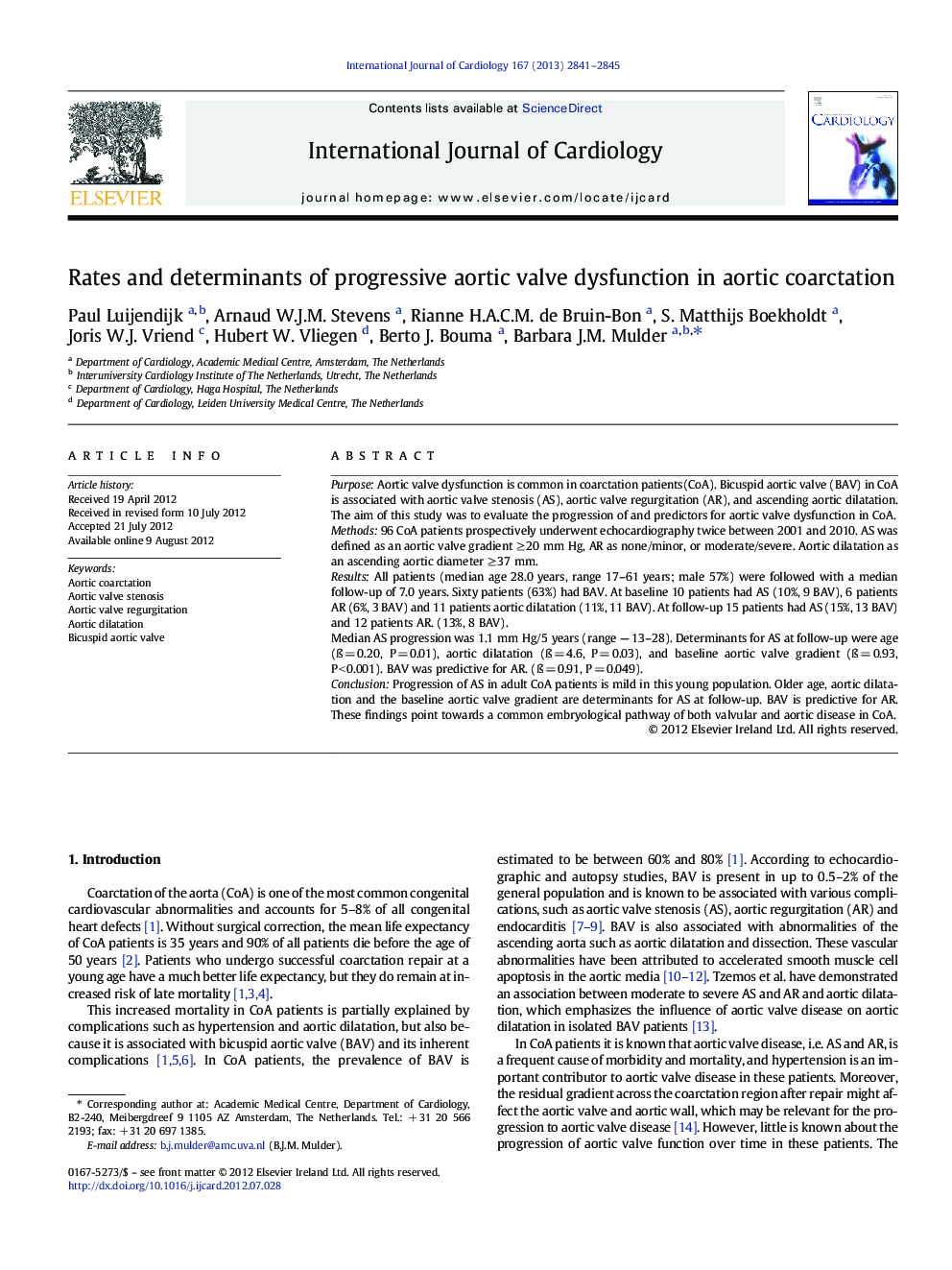| Article ID | Journal | Published Year | Pages | File Type |
|---|---|---|---|---|
| 5974615 | International Journal of Cardiology | 2013 | 5 Pages |
PurposeAortic valve dysfunction is common in coarctation patients(CoA). Bicuspid aortic valve (BAV) in CoA is associated with aortic valve stenosis (AS), aortic valve regurgitation (AR), and ascending aortic dilatation. The aim of this study was to evaluate the progression of and predictors for aortic valve dysfunction in CoA.Methods96 CoA patients prospectively underwent echocardiography twice between 2001 and 2010. AS was defined as an aortic valve gradient â¥Â 20 mm Hg, AR as none/minor, or moderate/severe. Aortic dilatation as an ascending aortic diameter â¥Â 37 mm.ResultsAll patients (median age 28.0 years, range 17-61 years; male 57%) were followed with a median follow-up of 7.0 years. Sixty patients (63%) had BAV. At baseline 10 patients had AS (10%, 9 BAV), 6 patients AR (6%, 3 BAV) and 11 patients aortic dilatation (11%, 11 BAV). At follow-up 15 patients had AS (15%, 13 BAV) and 12 patients AR. (13%, 8 BAV).Median AS progression was 1.1 mm Hg/5 years (range - 13-28). Determinants for AS at follow-up were age (à= 0.20, P = 0.01), aortic dilatation (à= 4.6, P = 0.03), and baseline aortic valve gradient (à= 0.93, P < 0.001). BAV was predictive for AR. (à= 0.91, P = 0.049).ConclusionProgression of AS in adult CoA patients is mild in this young population. Older age, aortic dilatation and the baseline aortic valve gradient are determinants for AS at follow-up. BAV is predictive for AR. These findings point towards a common embryological pathway of both valvular and aortic disease in CoA.
